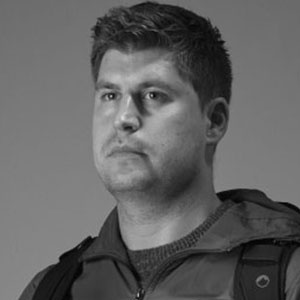3D mobile mapping: changing the PM landscape
It’s fair to say that over the past couple of decades, technological advances have presented the opportunity for untold savings in cost and time for project professionals, in particular thanks to 3D mobile mapping.
Whether project managers require the ability to record and assess a building undergoing redevelopment, construction progress monitoring or even demolition planning – handheld mobile mapping devices are increasingly the go-to tools for all stages of an asset’s lifecycle. But to an untrained eye, choosing from the breadth of solutions can be a minefield.
How the technology works
New handheld mobile mapping systems utilise laser light to scan and record 3-dimensional structures within a building, mine, forest or tunnel, and then couple this with software to build up a three-dimensional map of the survey environment.
In many scanning solutions, a combination of GPS satellites and fixed tripods provide the ability to capture information to create a 3D map. However, in enclosed, indoor or underground spaces where direct line of sight to satellites is impossible or impeded, GPS-reliant mapping solutions are not suitable.
As such, project professionals are increasingly turning to a technology that was developed by the robotics industry, Simultaneous Localisation And Mapping (SLAM). SLAM technology was created to allow unmanned vehicles to navigate unknown terrains whilst simultaneously mapping their environment, without the requirement for GPS.
For example, one product on the market, GeoSLAM’s ZEB-REVO solution, utilises a 3D SLAM algorithm to establish its position autonomously and collects over 43,000 measurement points per second with an average accuracy of +/- 15mm. Handheld mobile mapping devices such as this are increasingly being used by project managers, in a huge range of environments that would pose a challenge to traditional GPS methods.
The benefits and cost savings
For those operating in a more traditional organisation without prior experience of 3D mobile mapping, the premise may be daunting. The reality is that handheld mobile mapping devices are incredibly easy to use, requiring minimal training for non-experts. With a ‘walk and scan’ method of data collection, rapid mobile mapping is conducted much more quickly than traditional surveying methods, such as cumbersome tripods or trolleys with trip hazards.
This is arguably the most pertinent plus point here for project managers; the ability to survey locations up to 40 times faster than static traditional scanning tools. For projects with budget restrictions and time pressures, the use of a handheld mobile mapping device is a huge cost-saving exercise.
As an example, a land surveying firm recently conducted a scan of a nursing home using a handheld scanner using SLAM technology. In an understandably sensitive environment with residents living within the building around the clock, the team reported that the scanning exercise took just 30 minutes, when it would normally take closer to three days using static equipment. In any medical or care related facility, just as one example of an industry requiring considerate application of a scanning device, this kind of time-saving is immeasurably valuable. 
Thornton Abbey. Credit: Historic England

Eaton Lodge scan. Credit: Omega Geomatics
Data acquisition is of course just the beginning of the process, as the collected data requires post-processing in order to be of use. It can therefore be a good idea to look for a solution which offers the complete package of both hardware and software to speed up processing and analysis of the data.
This ‘post-processing’ part of the scan is, in reality, fairly straightforward. Most professional CAD or modelling packages allow direct import of scan data, and once complete, the project manager can export their scan data in a range of industry-standard file formats. This results in a much quicker post-processing time than other traditional methods, such as tape measures or laser distos, which subsequently speeds up the next stage of development – whether that be construction, refurbishment or demolition.
Applications for PMs
One of the most common applications of 3D mobile mapping is to conduct topographical surveys, to facilitate more effective planning and management of cities and towns. Historically, the enhancement of urban areas required many months of planning and design, but the increased availability and cost-effective nature of mobile mapping technology have reduced this timeframe considerably.
For more dangerous, hostile or previously inaccessible environments that may put personnel at risk, mobile scanners can be operated remotely, through a pulley system, autonomous-vehicle mount or airborne drone. SLAM technology permits the quick and easy surveying of complex, enclosed, multi-level environments, and so even a dilapidated building can be scanned quickly and efficiently using stairways to allow for 3-dimensional loops.

Credit: Blackdog Robotics
Another use of 3D mobile mapping is Digital Engineering, or scan-to-BIM. In a sector which is increasingly reliant on data-driven design and analysis of buildings, developments in the scanning field have had a hugely beneficial impact on construction, architecture and real estate projects. At GeoSLAM, we have even published a white paper on ‘Digital Engineering’ and the challenges and opportunities the sector will face in coming years (you can read this here).
Looking ahead
The potential uses for 3D mobile mapping tools for project professionals are clearly far-reaching, and the need to adopt technological advances is only going to become more pertinent. I’ve not even touched upon how AI and VR may play a role in the sector – but no doubt that future collaboration with other technology developers is on the horizon.
With clear cost-saving benefits to be had, together with the opportunity for highly detailed and rapid results, it is little wonder that many project managers have very quickly switched on to these new technologies with the world of 3D mobile mapping.


0 comments
Log in to post a comment, or create an account if you don't have one already.